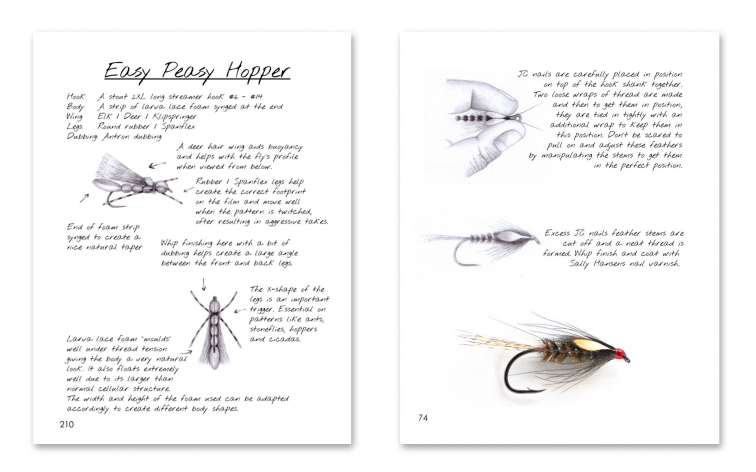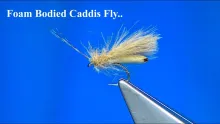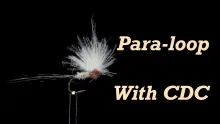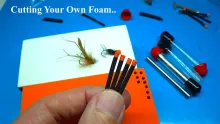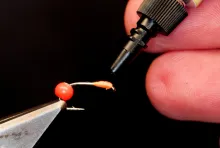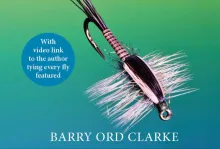This is a book I have been looking forward to for a while. And it doesn’t disappoint.
Updated or edited 9 months ago
South African angler, fly tyer and author Gordon van der Spuy has been posting about this book online for a while. I have even been lucky enough to be “in the loop” for some special email-updates from Gordon the past year or more, so I have been able to follow part of the development of “The Feather Mechanic”. I received a draft manuscript for the book already back in May, and with all Gordon’s updates I was fairly well aware of what to expect.
Still, holding the real book in your hands is something different than scans and sketches and almost finished chapters.
Gordon made it quite clear already from the beginning that he was aiming at doing something different, and his hand drawn sketches and small excerpts, which arrived regularly by mail and were also posted to friends on social media, indicated that this could be quite true. Without any closer resemblance or similarity in style or content, the upcoming book had me thinking about Oliver Edwards’ book “Flytying Masterclass” with its very detailed drawings and very personal approach to fly design.
The book lists both Gordon van der Spuy and Tim Wege as authors, but I think it's safe to assume that van der Spuy is the main author. Tim Wege is credited for layout and photography.
Gordon’s and Oliver Edwards’ way of shaping and tying flies are very different, and that is actually one of the things that are stressed in the book. Where Edwards’ flies are very precise visual imitations, the patterns in The Feather Mechanic are made to behave as much as look like the live natural – and some neither look nor behave like anything particular, but simply catch fish.
Van der Spuy puts a lot of emphasis on the phrase “form follows function”, and his fly designs are are a testament to this catchphrase. The choices made regarding materials and shapes are governed by how the fly should work in the water, while at the same time have a resemblance to a living quarry. But mobility, translucency, sinking rates and – above all – motion, are keys in the designs more than precise imitations. I love the example mentioned in the book: a cat’s play with a ball of yarn. It doesn’t look like anything a cat would eat, but still, if you roll it or pull it in front of a cat, it mostly triggers a fierce attack and oftentimes a very insisting chase.
Flies need to do the same with fish: trigger that instinctive hunting behavior.
A Squirmy Wormy or a Perignon nymph doesn’t exactly do a great job of imitating a natural, but has something that entices a fish to bite – motion, sinking rate, profile, whatever...
With the outset in these principles van der Spuy goes through some very detailed instructions for tying a number of flies. Some are his and new, some are well known patterns, like the Diawl Bach and the Squirmy Wormy. Every step and tying method is covered and illustrated and every choice in material and shape is explained. He spices these descriptions with little tales of people and fishing experiences, and compared to many other more “clinical” and matter-of-factly pattern descriptions and tying instructions, I have to say that I thoroughly enjoyed these as literature more than recipes.
They are long and in-depth, and combined with the excellent drawings, they should enable most tyers to tie the flies in the book. These are mainly trout flies for freshwater – lakes and streams – but there’s a lot to take away for tyers tying for other applications. Plus, as it is with many patterns, it’s easy to adapt many of these flies and methods to other uses.
As it was the case with the above mentioned Oliver Edwards title, the illustrations are a great asset. They might seem a little bland and diffuse compared to the glossy, saturated color photos in many contemporary tying books, but they manage to convey things which even a series of photos would have a hard time showing. It’s like with cartoons or animations: they can show things which are physically impossible in the real world: emphasize and exaggerate things, make solid materials translucent, show things which are otherwise hidden by tools or fingers.
On the other hand some of the materials and shapes become a little regular and geometric in the drawings, and probably not as shaggy and scruffy as they would be in reality, but the drawings still show what to do in excellent detail. And since the flies also appear in photos, you can see the scruffiness there if so inclined.
I’m not crazy about the “handwritten” pages, which appear for each pattern, but it does give some variation, and leaves a kind of diary or notebook-like impression, which I guess is the goal. Since the hand writing is a computer font anyway, I would personally have preferred that the writing was kept in the same typography as the rest of the book, but that’s probably a question of personal taste more than anything else.
I have seen some people write about this book as a “game changer” in fly tying books. I won’t go as far as that. It’s not a traditional fly tying or pattern book, and it certainly attacks its subjects differently, and is actually “readable”, meaning that you can read it as education and entertainment rather than using it as a recipe book, which only comes out when you want to tie a pattern it covers.
But other books have done the same. A few titles spring to mind like Dave Whitlock’s “Guide to Aquatic Trout Food”, Darrel Martin’s “Micropatterns”, Gary Borger’s “Presentation”, George V. Roberts’ “Fly Fishers Guide to Saltwater Naturals and their Imitation”. I could probably find more if I dug through my shelves. All take on the subject of tying flies with the outset in a desired look and behavior in the flies.
But Spuy’s book sure is a nice book, and a welcome departure from step-by-steps meticulously photographed on a uniform green or blue background. It’s a book that will teach you a lot about designing flies, and offers you a handful of really excellent freshwater patterns.
- Log in to post comments



